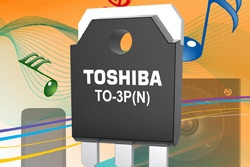Ayla Networks, which runs machine-to-Cloud-to-mobile device networks, launches a product next week which will allow machine manufacturers to monitor their products’ behavioural patterns and other characteristics after they’ve been sold to consumers.
Ayla already has a business model which gets its Wi-Fi IP into consumer goods and connects them to an analytics engine in the Cloud which can be accessed by a mobile device.
The company gives its Wi-Fi IP away to chip companies. Marvell, Broadcom, Qualcomm and MediaTek are among chip companies which put Ayla’s IP into Wi-Fi chips to use when a customer wants a connected consumer product.
The usefulness of the system to a user of a connected machine is that the analytics can warn the user if the machine is about to go wrong, or if it needs servicing, or can switch it on when energy costs are low, or can flag up that a job has been done.
The beauty of the Ayla system is that it can apply widely across very different machine types – smoke detectors, medical devices, thermostats, filtering systems, coffee-makers, lighting systems and many others, without the need for any customisation.
“I haven’t had to write a single line of code for any of my customers,” Ayla co-founder and vice-president of engineering Adrian Caceres told Electronics Weekly.
Machine manufacturers can use a tool on the Ayla web-site to configure the service to fit the characteristics which they want monitored on their product.
An extraordinary example of a customer product is a sock for a baby which can report on its vital signs and can flag up in what position it is sleeping, among other things. “I would never have imagined that application, ever,” says Caceres.
Users pay for the service via a transactional charge based on the amount of data they send to the cloud-based analytics engine.
The new Ayla product launching on Monday, called Ayla Insights, creates a feed-back loop so machine manufacturers can get information from machines after they have been sold to customers. It helps machine manufacturers understand how their products operate post-sale, giving them access to kinds of data to which they haven’t had access before – data which manufacturers can use in the design of new generations of their product.
As with anything connected to the internet the big question is always security.
Ayla approaches this by putting security in the machine, in the mobile device and in the cloud using asymmetric keys which are changed daily. None of the keys is the same as any another key but each can only be matched by one other, different, key.
Is it un-hackable? “Nothing’s un-hackable,” replies Caceres.
Ayla doesn’t have its own servers but runs its business on Amazon servers.
Caceres co-founded Ayla in 2010 and the founders self-funded the company for two years until it had an A Series funding round in 2012. Since then it has had a B Round and has raised, in total, $20 million.
The company employs 100 people, mostly in Sunnyvale, with 30 in Shenzhen.




